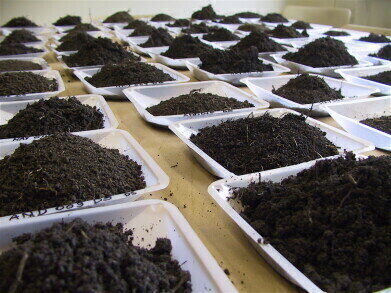Soil testing
What are the main sources of soil pollution across Asia?
Feb 09 2024
Soil pollution in Asia, a pressing environmental issue, arises from a complex interplay of natural processes and human activities. This problem not only degrades the environment but also poses severe health risks to humans, making it imperative to understand and address its main sources.
Natural sources, or geogenic sources, such as the weathering of arsenic-bearing minerals, contribute significantly to soil contamination in the region. Arsenic, a highly mobile contaminant, is particularly notorious for its toxicity and potential to cause diseases, including various cancers. This element primarily enters the soil through natural processes but is exacerbated by human activities such as excessive groundwater withdrawals for irrigation, particularly in South Asia. The natural presence of arsenic in soil is a major concern, especially in the Bengal delta region, which is identified as a hotspot for arsenic pollution.
Volcanic eruptions in the Asia-Pacific's "Ring of Fire" add another layer of complexity to natural soil pollution. These eruptions release various trace elements, including arsenic, mercury, and fluorine, into the soil. While the direct impact of these eruptions on agricultural soil may be limited, the contribution of volcanic ash to soil composition can elevate the levels of these toxic elements, posing risks to soil health and, consequently, to food safety.
Wildfires represent another natural source, introducing polycyclic aromatic hydrocarbons (PAHs) into the soil. These compounds, resulting from the incomplete combustion of organic materials, can significantly affect soil quality. Although PAHs from wildfires are a natural phenomenon, the magnitude of soil pollution from such events is often intensified by human contributions to atmospheric deposition.
Industrial activities across Asia significantly exacerbate soil pollution. The region's rapid industrialization has led to widespread contamination with hazardous substances, including heavy metals and persistent organic pollutants (POPs). These contaminants originate from a variety of industrial processes, such as metal smelting, chemical processing, and petrochemical production. Poor waste management practices and lax regulatory oversight further compound the problem, allowing pollutants to enter the soil and pose risks to environmental and human health.
In countries like Indonesia, the management of industrial waste, especially hazardous and toxic wastes containing heavy metals, has led to severe soil contamination issues. Improper disposal practices, such as the unregulated melting of batteries, have resulted in alarmingly high levels of lead in the soil, underscoring the health hazards associated with soil pollution.
Efforts to control and mitigate soil pollution in Asia face numerous challenges. These include the identification and quantification of pollution sources, the implementation of effective remediation strategies, and the need for stronger regulatory frameworks. The diversity of soil contaminants and the complexity of soil ecosystems make addressing soil pollution a daunting task. Additionally, the legacy of pollution at industrial sites and the significant costs associated with cleanup efforts pose substantial obstacles to remediation.
Addressing soil pollution in Asia demands a multifaceted approach that encompasses regulatory improvements, technological advancements in pollution prevention, and enhanced soil monitoring. Public awareness and community involvement are also critical for fostering sustainable practices and driving environmental protection efforts.
So, soil pollution in Asia, driven by both natural processes and anthropogenic activities, presents a significant environmental challenge. The health of the region's soil is crucial for ensuring agricultural productivity, ecological balance, and human well-being. Tackling this issue requires collaborative efforts from governments, industries, communities, and international bodies to safeguard the soil for future generations.
Digital Edition
IET 35.2 March
April 2025
Air Monitoring - Probe Sampling in Hazardous Areas Under Extreme Conditions - New, Game-Changing Sensor for Methane Emissions - Blue Sky Thinking: a 50-year Retrospective on Technological Prog...
View all digital editions
Events
Jun 08 2025 Denver, CO, USA
Jun 09 2025 Raleigh, NC, USA
Jun 10 2025 Toulouse, France
Jun 11 2025 Copenhagen, Denmark
Jun 17 2025 Guangzhou, China

.jpg)







.jpg)









